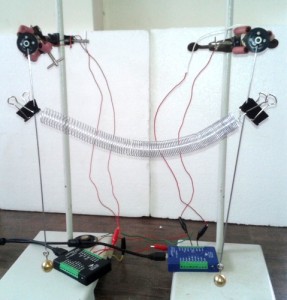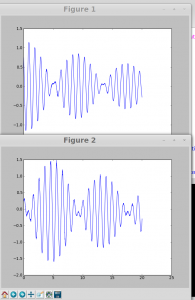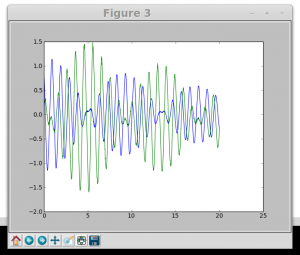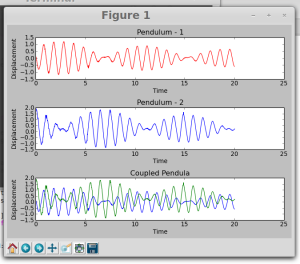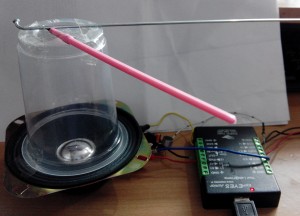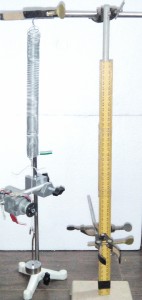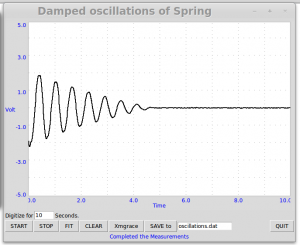Coming Soon
Category Archives: GSoC Weekly Report
Science Hack Day India 2016!
Announcing Science Hack Day India – 2016
We are excited to announce our 1st Science Hack Day India!
The event will take place on 22-23 October 2016 at Belgaum, a small city surrounded by some splendid nature, in Karnataka State of India.
We welcome you all to join us at SHD India. Let’s collaborate, learn, hack, build cool stuff and have lots of fun.
Registration is now open at eventbrite.
For more announcements follow us on…
What is Science Hack Day?
Science Hack Day is a two-day event where anyone excited about making weird, silly or serious things with science comes together in the same physical space to see what they can prototype within 30 consecutive hours. Designers, developers, scientists and anyone who is excited about making things with science are welcome to attend – no experience in science or hacking is necessary, just an insatiable curiosity.
The mission of Science Hack Day is to get excited and make things with science! People organically form multidisciplinary teams over the course of a weekend: particle physicists team up with designers, marketers join forces with open source rocket scientists, writers collaborate with molecular biologists, and developers partner with school kids. By collaborating on focused tasks during this short period, small groups of hackers are capable of producing remarkable results.
Venue:
We have an amazing place called Sankalp Bhumi Farm Resort for this event. It was once an abandoned quarry, today natures glory restored. The resort resembles an enchanting oasis, with a thick set of trees, sprawling lawns, and a large lagoon surrounded by picturesque expansive rock walls as backdrop.
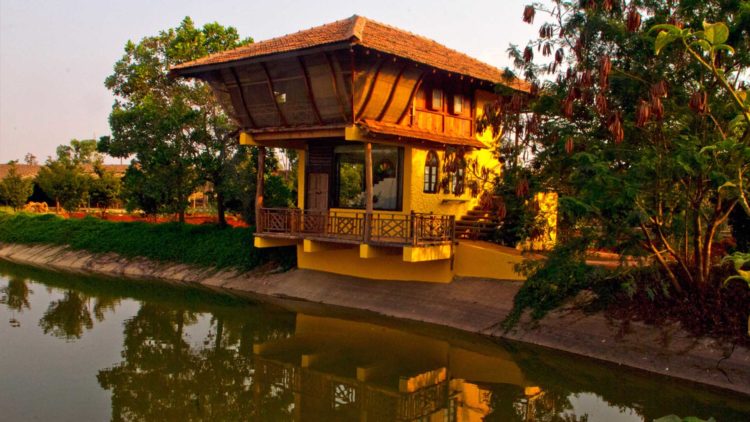
Tentative Program
Day 1:
09:00 Arrive, check-in, eat breakfast (provided)
10:00 Welcome, introductions
10:30 Hacking begins!
10:45 Lightning talks
12:00 Lunch (provided)
13:00 Hacking continues
18:00 Door closes
Day 2:
09:00 Doors open, breakfast (provided)
12:00 Lunch (provided)
13:30 Hacking stops
14:00 Hack demos begin! (Typically 2-3 minutes per demo)
16:00 Winning teams announced & given awards/medals
Science Workshops
Along with hacking we also have Science Workshops for kids. Workshops will run parallel to the SHD. We will be making amazing science toys and solar lanterns 🙂
Organisers:
FOSSASIA India Team.
Praveen Patil, Hong Phuc Dang, Rahul Khanolkar
Google Code-In 2014 with FOSSASIA
 FOSSASIA, best known for their Open Technology Event in Asia, is a non-profit organization that supports Free and Open Source Projects that range from Open Source software, to design, graphics and open hardware in Asia and around the world. The aim of FOSSASIA is to develop and adapt new technologies for social change.
FOSSASIA, best known for their Open Technology Event in Asia, is a non-profit organization that supports Free and Open Source Projects that range from Open Source software, to design, graphics and open hardware in Asia and around the world. The aim of FOSSASIA is to develop and adapt new technologies for social change.
Attending FOSSASIA back in Feb-2014 was a life changing experience for me. It was full of fun, joy and a lot of knowledge filled learning experiences. I could meet some of the amazing FOSS contributors, learn lot many things and got inspiration to do something positive and contribute back to the society.
With the encouragement, support and guidance from my mentors Mario Behling and Hong Phuc, I could successfully complete my GSoC-14 Project on ExpEYES – An Open Source Pocket Science Lab. This was an inspiring moment that motivated me to keep learning and contribute to create better learning resources and opportunities for students.
 2014 being FOSSASIA’s first year of participating in Google Code-In as a mentoring organization, brought yet another excellent learning opportunity for me and my students. FOSSASIA’s admins Hong Phuc and Mario Behling encouraged me to take part in GCI as a mentor and help Pre-University students to take their first step in the world of FOSS, learn and make tiny little contributions.
2014 being FOSSASIA’s first year of participating in Google Code-In as a mentoring organization, brought yet another excellent learning opportunity for me and my students. FOSSASIA’s admins Hong Phuc and Mario Behling encouraged me to take part in GCI as a mentor and help Pre-University students to take their first step in the world of FOSS, learn and make tiny little contributions.
I started interacting with the students to spread awareness about GCI. I gave presentations in the classrooms and also tried to communicate with other students through face book. On December 1, 2014 when GCI contest started, most of my tasks were claimed by students from outside India and there was hardly any response from students of my own institute or neighboring pre-university colleges. Very few students participated and they were finding it difficult to complete even beginner level tasks. We decided to explore this situation, find the reasons and do something to motivate the students.
Ours is a small city in South India and we found that the main reason for students not able to participate was lack of IT infrastructure in schools. Less than 1% of high school students have access to computers and Internet. They get a chance to learn coding only in 11th standard, that too if they opt for computer science. In rural India the situation is even worst. I realized that students are willing to participate but are unable to do so because of absolute lack of basic computer skills. Some of those who could participate claimed very simple tasks involving only documentation and none of them claimed tasks with coding.
With the suggestions and guidance from Mario and Hong Phuc, we organized a series of workshops for students on every Saturday, Sunday and on holidays at my house. The first workshop in the series was on “Introduction to Free and Open Source Software” and “Google Code-In”. More than 100 students turned out for the session. We also had a session on installing Gnu/Linux, Libre Office and softwares like Gimp, Inkscape etc… I was happy to see students engaged with FOSS learning till late in the evening even though their final exams were approaching.
The next few workshops/sessions were focused on using FOSS for documentation, basic Image processing, designing, basics of Blogging and Python Programming language. These interactive sessions were of great help in developing confidence and motivating students to participate in GCI. More than 70 students registered for GCI. Many expressed that it was the first time that they could have such hands on experience on computers and that they enjoyed learning and creating with FOSS.
Many of our friends encouraged and helped us by providing laptops, Internet dongles, Projector and most importantly their valuable time during workshops. My best friend (My better half … 🙂 ) Minal Patil took care of snacks for students and also helped in conducting workshops. We even had a GCI session on 25th of December and celebrated Christmas with FOSSASIA and GCI in a different and meaningful way… 🙂
It was amazing to see the happiness on the face of students, who never had any hands-on experience with computer, complete their first GCI task. Many students could complete beginner level tasks related to documentation and outreach. Some could create their blogs and write about themselves and their experience about participating GCI. Few students could also contribute to our Open Source Project ExpEYES – Pocket Science Lab. Some students also worked on an interesting project, initiated by Mario Behling , to create a small website and add details about FOSSASIA’s mentors and students. The project was intended to provide students an opportunity to experience open source development culture. It was a big success with a great website created together by students and mentors.
It was great fun to learning new things everyday along with the students.
The most fulfilling moment came when results were announced on the official Google Open Source Blog.
- My organization FOSSASIA is at No 1, with 587 tasks completed. A total of 174 students completed at least one task with us.
- Our School Govindram Seksaria Science P.U. College, Belgaum (GSS) in India is at No 2, among 397 schools from 53 countries with 49 students completing the tasks.
My Pre-university College management members were happy to know about our success in GCI and encouraged me with felicitation. They have even displayed a banner in the college campus mentioning about FOSSASIA, GCI and success of our student participants. They expressed their wish to have an MOU with FOSSASIA and continue to take such steps to help students from our region to learn to code and contribute to FOSS. They also offered all the infrastructural support.
I am also happy to share that our Grand Prize winners Namanyay Goel and Samarjeet Singh also contributed to Project ExpEYES along with other projects under FOSSASIA. Many other students contributed to the ExpEYES project by writing python code for Unit Conversion GUI’s and by writing documentation for science experiments.
Participating in GCI with FOSSASIA as a mentor was a great learning experience and I would like to thank Hong Phuc and Mario Behling for this wonderful opportunity. You have inspired me to take up this task of helping kids from this region to learn to code, as a lifelong mission. Thanks a billion to all the students who participated in the contest and wish them a great future ahead.
I must also thank Stephanie Taylor and Co. at the Google OSPO, for organizing this wonderful contest and for creating better learning opportunities for students all over the world.
By Praveen Patil, FOSSASIA mentor
Random Pics : Google Code-In with FOSSASIA
GSoC Weekly Report 13
(From Monday 11th August to 17th August 2014)
This week I conducted experimental trials for all the experiments using python code written for Real-Time plotting and also code for Off-Line mode. Did modifications in the programs wherever necessary and finalized the code for experiments. Wrote python code for Mechanics and Sound GUI. Worked on documents.
I am also working on packaging everything so that the plug-ins can be separately installed on a machine where ExpEYES is pre-installed. Need few days for this work. I will continue this after the final evaluation report is submitted.
To Do Next Week……
- Submission of Final Evaluation
- Complete and upload Experiments documents to the blog site.
- Take trials with experimental set-up and upload photographs and videos.
- Create a package that can be installed on a machine where ExpEYES is pre-installed.
Since most of the apparatus for all experiments is home-made, I will be uploading the procedure with photographs for creating these devices. I will also add documents with relevant theory for each of the experiment to the blog site.
It had been a great journey with new learning experiences. Thanks a million to my mentors Mario Behling, Hong Phuc Dang & Hau Dang at FOSSASIA and Ajith Sir. Even though the coding season ends tomorrow, I am feeling like its a beginning for me.
There is a lot to be done…. and I will be continuing with the work to make this dream a reality.. a dream of providing every student with the most affordable pocket science laboratory.
I have thought of many new experiments on which I will be working for next couple of days. Also thinking of having a separate website for this work…its possible now…thanks to funding from Google.
GSoC Weekly Report 12
(From Monday 4th August to 10th August 2014)
This week we could complete the planned work of writing python programs for plotting real-time graphs and Experimental set-up and code for sound Experiments.
The days spent at IUAC (Inter University Accelerator Centre) , New Delhi, ( from 7th August to 10th August) were really fruitful in accelerating the project work. Dr. Ajith Kumar (who is the man behind Phoenix Project and inventor of ExpEYES) helped me to get permission to work in Teaching Lab and also arranged for my accommodation in IUAC Guest House. Ajit Sir helped me a lot with my project work in writing python programs to plot graphs in real-time.
He has also designed a tiny sine wave generator using ATTINY85 micro-controller which is of great use in performing sound and waves experiments. We spent a lot of time in the laboratory to give finishing touch to all the programs developed so far. Jithin B P , IISER Mohali, (jithinbp at gmail.com), who is working on developing android app for all ExpEYES programs was also there with us.
Things we could do ……
- Completed Coupled Pendulum Experiment with all the theoretical details
- Experiment to obtain Chladni figures is complete with the experimental set up and also the python code access the experiment.
- We got the air-track set-up for doing the mechanics experiments. Repeated some of the motion related experiments to study the changes required. We modified the program for using srf module to plot position time graph. Now we can fetch the position-time data and store it in a file and then plot the p-t, v-t and a-t graphs. We wrote another program to plot this graph in real -time. This program enables students to see the graph in real time as the glider moves on the air track.
- We also set-up a pendulum experiment using a thick metal block and suspended it using long strings to have a pendulum of large time period. The program is written to plot the position of pendulum using motion sensor. Committed the same to Git repository. The plot shows the smooth sine curve of oscillations.
- Tried the experiment with motion sensor using toy cars. this can be an amazing demonstration experiment for highschool students.
Modified and finalized the following python programs…
- pendulum-echo.py : Program to study oscillations of a pendulum using ultrasonic sensor sfr05 (position detector) by plotting real-time graph
- coupled-pend-real-time.py : Program to plot oscillations of TWO coupled pendulums in real-time
- motion-airtrack-echo.py : Programe to plot position time graph for vehicles moving on linear air-track
- motion-compare-airtrack-echo.py : This program allows to plot position-time graph af motion of a vehicle on an air track.
One can take multiple trials and view all the plots. this can be used to compare different aspects of motion
like velocity, acceleration etc… - motion-two-srfecho.py : This program allows user to use TWO motion sensors (srf-05 modules) and plot both the graphs
in real-time. This can be used for studying collisions, conservation of momentum etc…on air track or also frictionless track. - We did necessary modifications in ATTINY85 based board which can take square wave as input and generates sine wave.
- Did the experiment to obtain Lissajous figures using two ATTINY boards and wrote the python code to plot the graphs.
- Also wrote a code for GUI for sound and waves experiments.
To Do Next Week……
Since tomorrow is the [GSoC 2014] Suggested ‘pencils down’ date, therefore coming week I will be working on scrubbing the code, improving documentation and completing integrated GUIs for mechanics and sound experiments.
The Firm ‘pencils down’ date is ob 18th August 2014. therefore before Sunday 17th August I will try and give finishing touch to everything.
GSoC Weekly Report 11
( From Monday 28th July 2014 to Sunday, 3rd August 2014)
This week I could develop two new experiments and worked on python code of the experiments developed so far.
Things we did this week….
- Completed the set-up of sound resonance experiment.
- Set-up experiment for studying Oscillations of Coupled pendulum. Performed the experiment in three different ways …
- Both oscillating in phase
- Both oscillating out of phase
- One at rest and other oscillating
Here is the experimental set-up….
The waveforms generated using DC motors after amplification…
The waveforms show beats as theoretically expected….
The complete code is here…
- Worked on another experiment for producing Chladni patterns using ExpEYES. For the experimental Set-up I used a CD as Chladni plate. SQR1 is connected to a small inductor (a coil of wire with no magnetic core) and produces a sinusoidal magnetic field. This is then placed close to a small magnet attached to the plate, and so produces a sinusoidal force on the magnet. Two small magnets are placed on the edge of the plate. The inductor is placed so its centre is directly beneath the magnets and as close as possible to the plate without touching it.
-
on Saturday we could complete the set-up for resonance of cantilever beam experiment. We used a plastic stick and bicycle wheel spoke as a cantilever beam. A plastic disposable cup is attached at the center of a loudspeaker using adhesive ( which can be removed easily). Then the cantilever beams are fixed on the top of the cup using cello tape. The speaker is connected to SQR1 and the frequency is gradually changed. when the frequency matches with the natural frequency of the beam it starts vibrating with large amplitude.
The variation of resonance frequency with length can be investigated by cutting sections off the end of the plastic stick.
This is the setup we used….
TO DO next week….
- Work on common GUI for accessing all the experiments.
- Continue working on documentation and code for all the experiments.
GSoC Weekly Report 10
( From Monday 21st July 2014 to Sunday, 27th July 2014)
I am happy with the work that I could do this week. Planning and basic set-up of almost all planned experiments for my GSoC project is complete. Gathered the required apparatus and set-ups are ready. Still some work on python programs for these experiments and documentation is to be done. In another week I will be able do complete the work. Then I can focus on polishing the code and finalizing everything.
Things we could do this week…..
-
Completed python program for using photo-gates for time measurements in various experiments. ( Some issues like timeout error are to be solved) -
Started working on an interesting experiment of Helmholtz Resonator. -
Wrote a python program to digitize sound resulted from different resonators. With this program it is possible to change the frequency of source and when it matches with the natural frequency of resonator, a loud sound is produced. Tested the code with a bottle ( which resonates at about 200 Hz) and a test tube (which resonates at about 450 Hz). -
Python program ( srf3.py) to fetch data from srf module and plot graphs needed some modifications to plot velocity and acceleration graphs. Now the basic program is complete and plots position, velocity and acceleration. Velocity is calculated using numerical differentiation and acceleration is calculated as the second derivative of position with numerical methods. Wrote following code for velocity and acceleration. Committed the entire program to GIT Repo. - In most of the mechanics experiments we are trying to plot multiple graphs ( position, velocity and acceleration or kinetic energy and potential energy etc.) in one figure. In the figure the axis labels of two graphs are overlapping. These labels should have some spacing between them. Studied different functions available in python. I found tight-layout() function from matplotlib to be very easy and useful. Sometimes it can happen that axis labels or titles (or sometimes even ticklabels) go outside the figure area, and are thus clipped. tight_layout() can prevent this and also adjust spacing between subplots to minimize the overlaps.
- The experiments of resonator and resonance tube are generally performed with tuning forks. Since tuning fork produces very low intensity sound, it is not clearly audible and the frequency is fixed. therefore the length of the resonance pipe must be changed to adjust with the frequency of tuning fork. We used a speaker connected to SQR1 of ExpEYES. frequency of SQR1 can be varied till we get sound of resonance. a wide range of frequencies is available from ExpEYES therefore it is easy to do this experiment with various sizes of tubes and resonators. We used a mic to study the amplitude. Wrote a python program to change frequency of SQR1 and to plot the frequency v/s amplitude graph. The program for frequency response study of pizzo buzzer was already available. Just made few modifications required for this experiment. I did experimental trials with a measuring flask, plastic pipe, conical flask and a round bottom flask. Resonant frequency is between 300Hz to 750 Hz which varies with length of tube and volume of resonator.
Difficulties faced and things TO DO next week….
- I am working on smoothing the graphs using filtering techniques. Wrote a program using Savitzky-Golay filtering ( From this source). I could remove all the errors in the program but not getting the plots. Need to work on it.
- Ultrasonic sensor giving time-out error when used with get-echo program with SQR2 and IN1. It is working fine with SQR1 and SEN. Need to solve this issue.
- Need to write a separate GUI for time, Speed and acceleration measurements using Photo-gates.
- Complete Coupled pendula experimental set-up and python program.
- Continue working on documentation.
GSoC Weekly Report 9
( From Monday 14th July 2014 to Sunday, 20th July 2014)
This week I started setting up few new experiments with Spring Oscillations and Friction.
Experiment to investigate the damping effect of air, water and other viscous liquids on spring oscillations can be very interesting if done with a computer interface. Currently these set-ups are available for very high cost and come with proprietary and closed source software. They general use Rotary motion sensors which are costly. We could set up this experiment with low cost apparatus using ExpEYES. Tried using a simple DC motor to fetch the data and plot oscillations. ( we were using this method for digitizing pendulum waveform). After multiple trials now the setup is ready and got amazing results.
The schematic diagram and my home made set up is here…… ![]()
Here is the screen-shot of the waveform generated in water.
Repeated the experiment with other liquids like glycerin.
- Oscillations is a very important phenomena in physics and has an extremely wide range of occurrences. They are visible in the swinging and cushioning of cars or suspension bridges. In Nature, oscillation always occur as coupled ones. I started working on setting up an experiment with two spring pendulum to study oscillations of coupled pendulum. In this experiment we will try to get the characteristic frequencies and investigate the phenomenon of beat-vibration with two coupled spring pendulum.
- Conservation of energy is yet another important concept in mechanics. It can be demonstrated easily by calculating total energy of a body at different positions during its motion. We could do this experiment in two ways
- Using Ultrasocic sensor : SRF 05 module transmits a burst of ultrasonic pulses. The ultrasonic pulses reflect off a target and return to the face of the sensor. The sensor measures the time between the trigger rising edge and the echo rising edge. It uses this time and the speed of sound to calculate the distance to the object. To determine velocity, it uses consecutive position measurements to calculate the rate of change of position.
- Using Photogates : A photogate monitors the motion of objects passing through its gate, counting events as the object breaks the infrared beam. If the size of the object is known, by measuring the time an object blocks the gate, you can determine the velocity.
Also got the apparatus for energy conservation experiment prepared from local carpenter in wood. Its working fine. Wrote python program for the experiment. User can enter the value of initial height of the metal sphere, to calculate Potential energy. When the Sphere roles between two photo-gates, time can be measured with microsecond accuracy and velocity and hence kinetic energy can be calculated. The results show that Initial Potential Energy is equal to final Kinetic Energy and hence proves the Energy Conservation Theorem.
- Did required modifications in the main GUI program ” CROPLUS” written by Dr Ajith Kumar, to access these new experiments. Uploaded this program on my GIT repo. Also started writing a new program for a GUI to access these mechanics experiments separately.
As of now all the basic requirements i.e. the sensors and the required python programs to access them are ready. Also most of the physical set-ups are ready ( Excluding independent sine wave generator). Now I will be focusing on …redoing the experiments, debugging the errors and polishing and finalizing python code for each experiment.
To Do next week…
- Finalize all mechanics and sound experiment.
- Complete the required documents and publish them in repository.
- Start working on Integrated GUI for mechanics experiments.
Tuesday, 15th July 2014
GSoC weekly Report 8
( From Monday 7th July 2014 to Sunday, 13th July 2014)
This week till 11th July 2014 I was in Montpellier, France, participated in Libre Software Meeting RMLL-2014. Returned back today early in the morning.
This week I had experienced some good and some horrible things too.
The good things ….
- I got to meet many people actively contributing to Free Software World.
- Had interaction with Richard Stallman (RMS) of Free software Foundation. He was happy to see development of ExpEYES.
- I could spend some time with Georges who helped me with my GSoC project. We worked on GUI’s required for mechanics and sound Plugins. He also guided with packaging.
& The horrible things
- Loosing my baggage in air travel….lost my acoustic and light sensors, ExpEYES kit, A tablet and other asccessories required for my ExpEYES experiments 🙁
………. Fortunately I have some extra ultrasonic sensors at home.
The only productive thing is that I could work on GUI’s for experiments with friction, Doppler Effect as I had data obtained from experiments that I did at home before leaving to France. As I am lagging behind my planned schedule I need to accelerate and work 24X7 this week so that I can finish documentation of all experiments and GUI’s by 20th of this month as planned.



















